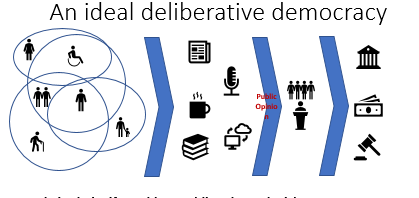- Facebook234
- Twitter2
- Total 236
I’ve categorized a bunch of recent tweets by putting them in Jürgen Habermas’ three buckets:
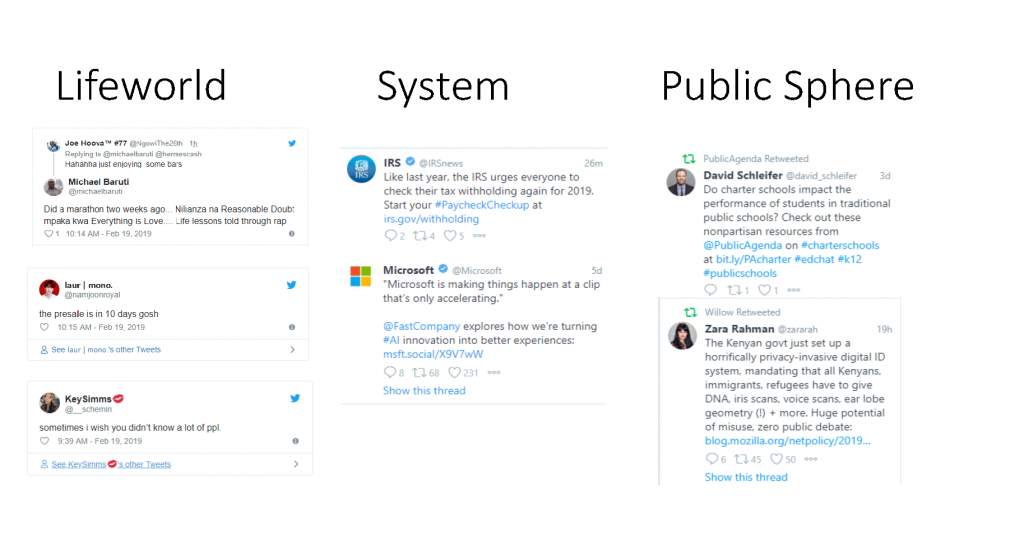
- In the first column, the tweets are literally legible–I can read them–but I don’t know much about their significance. That is because they are meant for friends, people who share experiences with the authors. Because so much common experience is assumed, these are essentially private messages in a public space. In Habermas’ terminology, they represent the Lifeworlds of the authors and their friends.
- In the second column, employees of formal organizations are doing their jobs–telling people to file their taxes, encouraging them to buy products. For Habermas, these are Systems. They have pre-determined goals that they are openly pursuing–power and profit.
- In the third column, people are expressing views to audiences that include strangers about matters of common or public concern. These authors have emerged from their respective Lifeworlds to say something about how Systems should change. Their goal is to educate or influence. This is the Public Sphere.
Below is a diagram of how it should work. People should enjoy their Lifeworlds. They have a right to them. I show each person’s horizon of experience and assumptions as unique but overlapping with those of other people, to allow shared meaning.
Individuals should emerge into the public sphere to advocate for changes, addressing other people as free subjects who will respond to good reasons. Together, they create public opinion.
Since opinion always involves disagreement, a deliberative and representative legislature should take their input and make decisions, which should affect the Systems of law, market, and government.
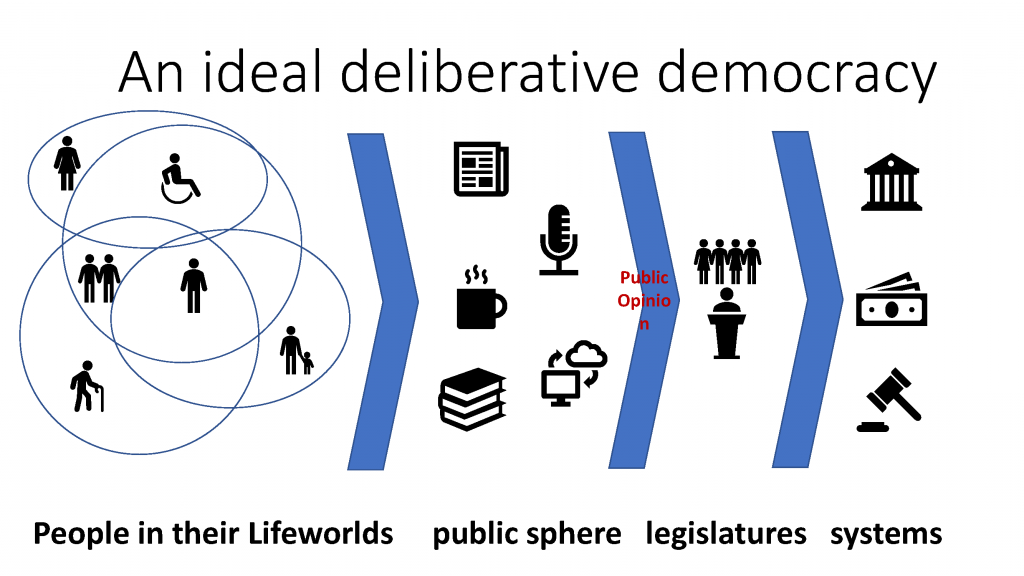
This is how it often actually works:
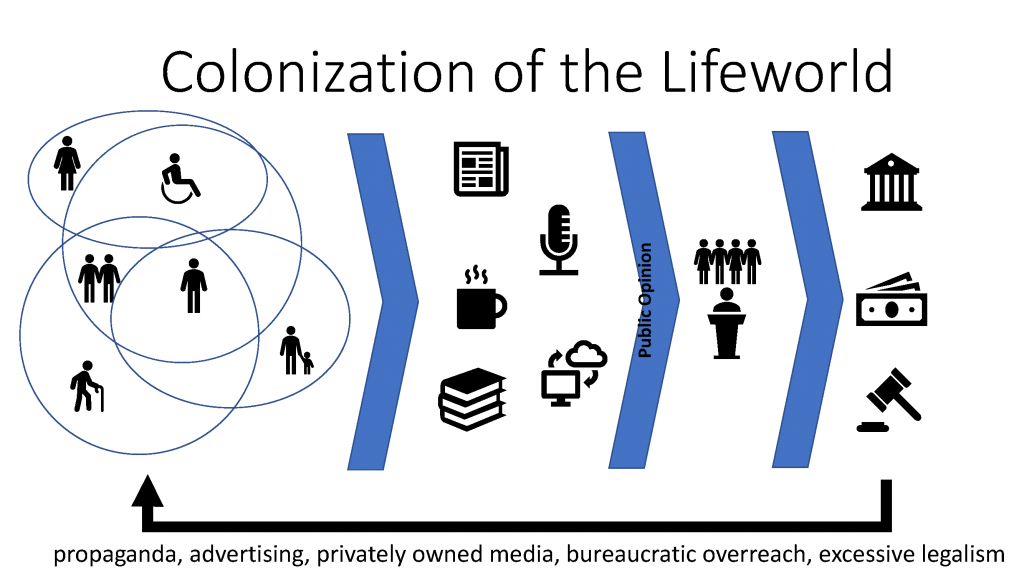
The systems of money and power influence public opinion by infiltrating people’s Lifeworlds.
One particular mechanism is a message from a System that pretends to be your friend. Budweiser tweets all day with private individuals who drink its beer. And Donald Trump sends tweets to 58 million people that look like messages from a buddy at loose ends around his house. Josh Patten brilliantly satirizes them by responding in kind.
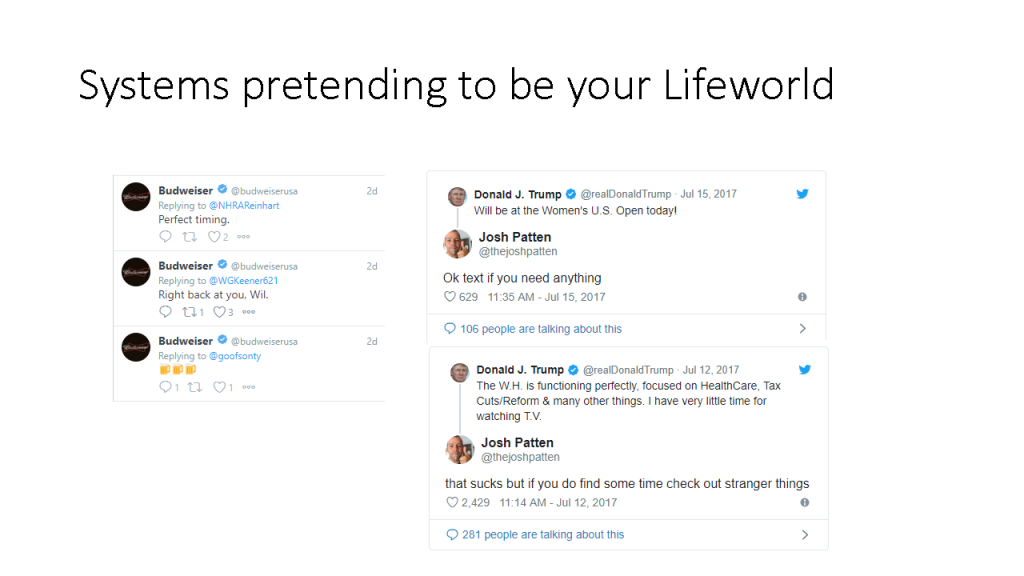
(These are some slides from today’s lecture in Introduction to Civic Studies. See also Josh Patten’s satire; Lifeworld and System: a primer; protecting authentic human interaction; Does Twitter “smoosh” the public and private?; and Habermas illustrated by Twitter.)
